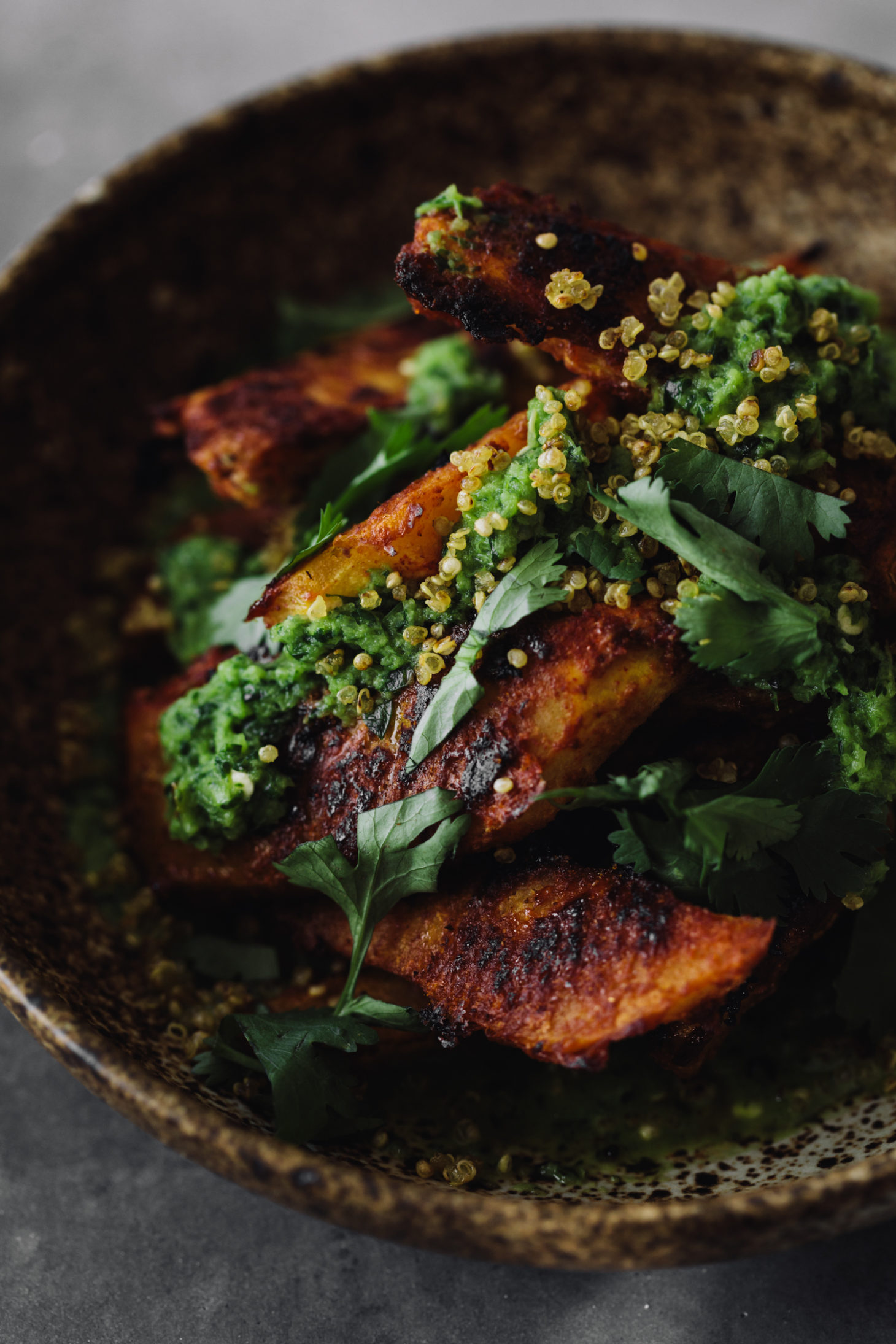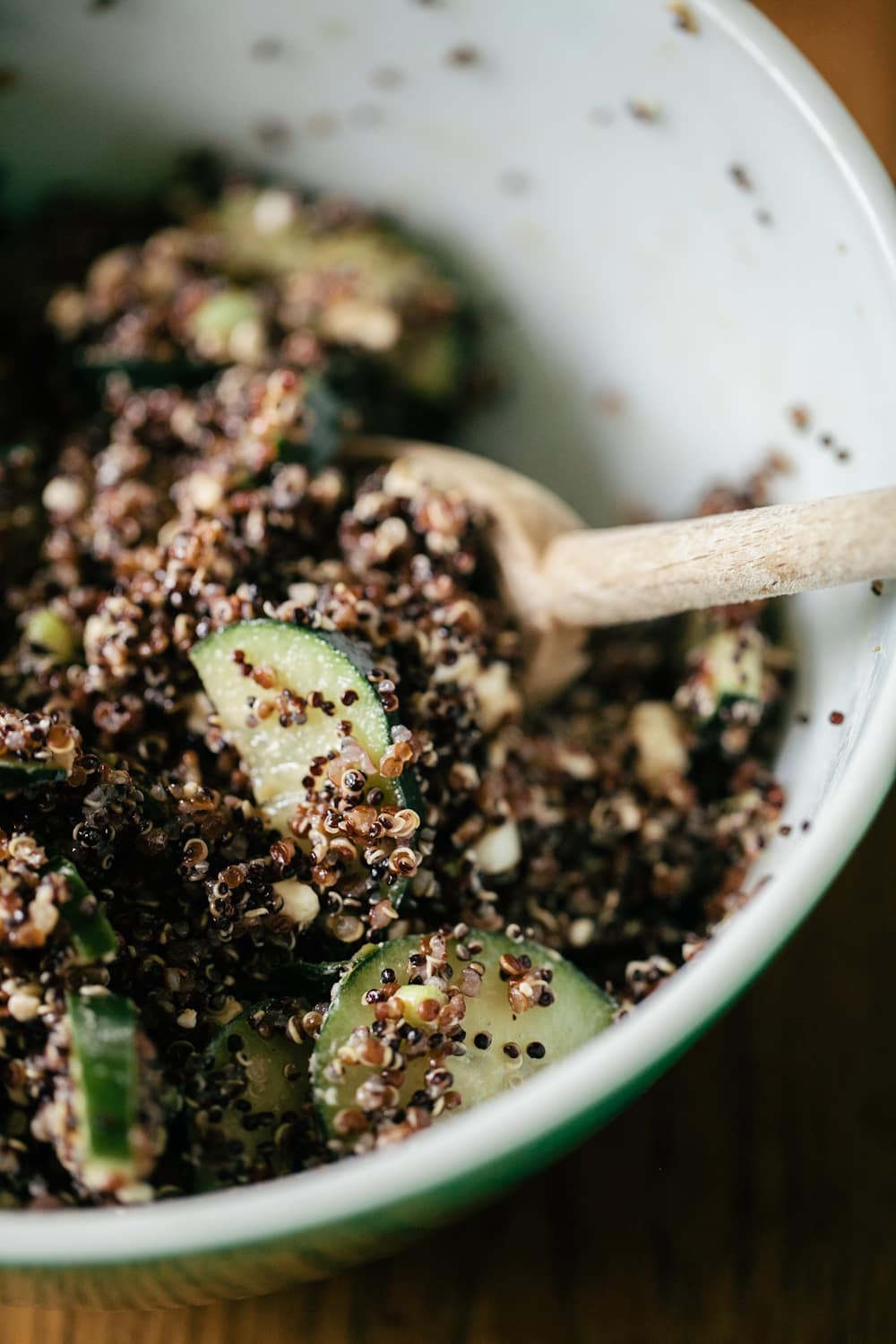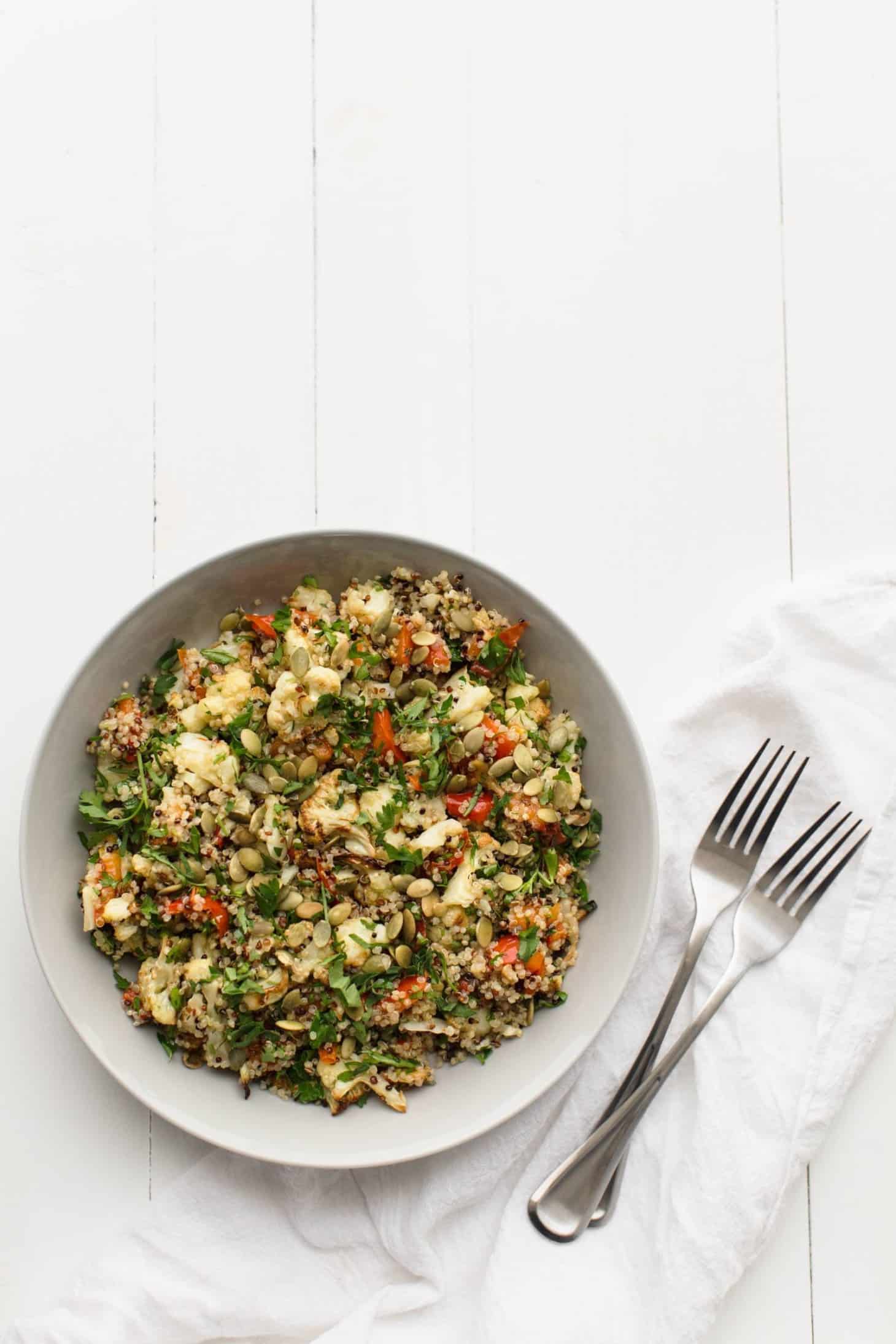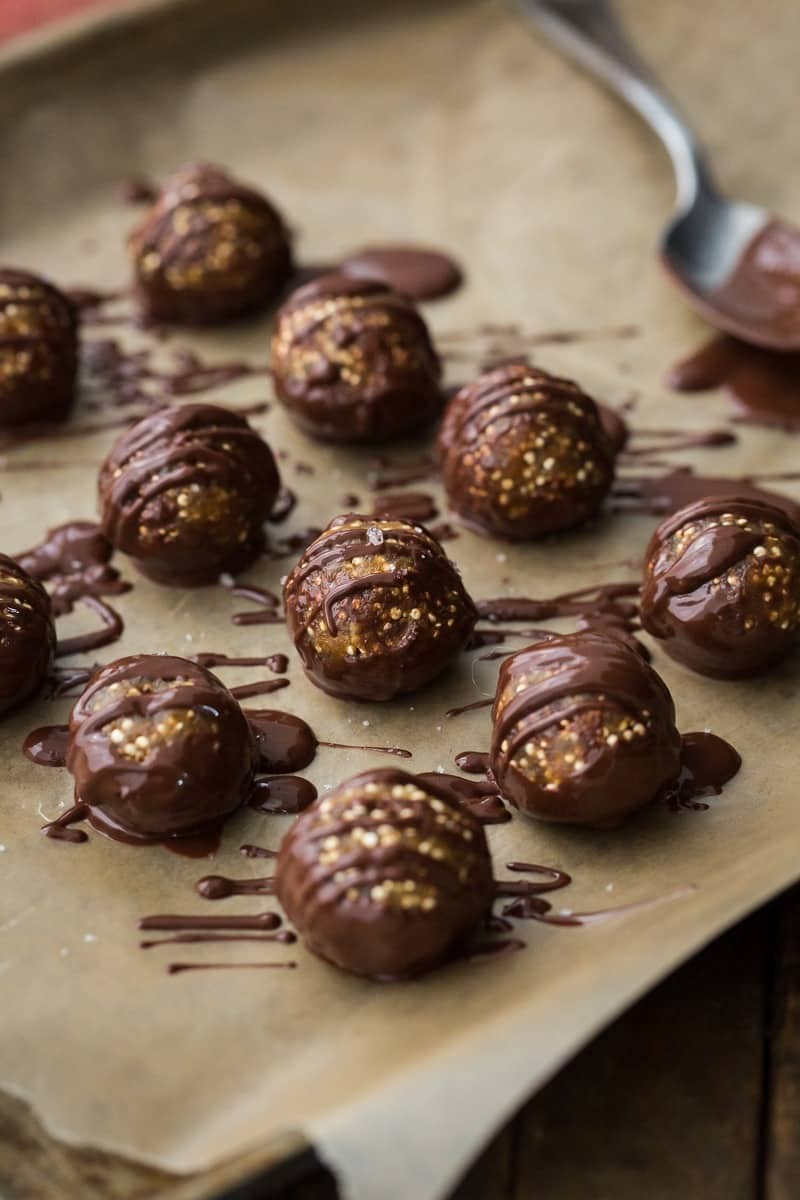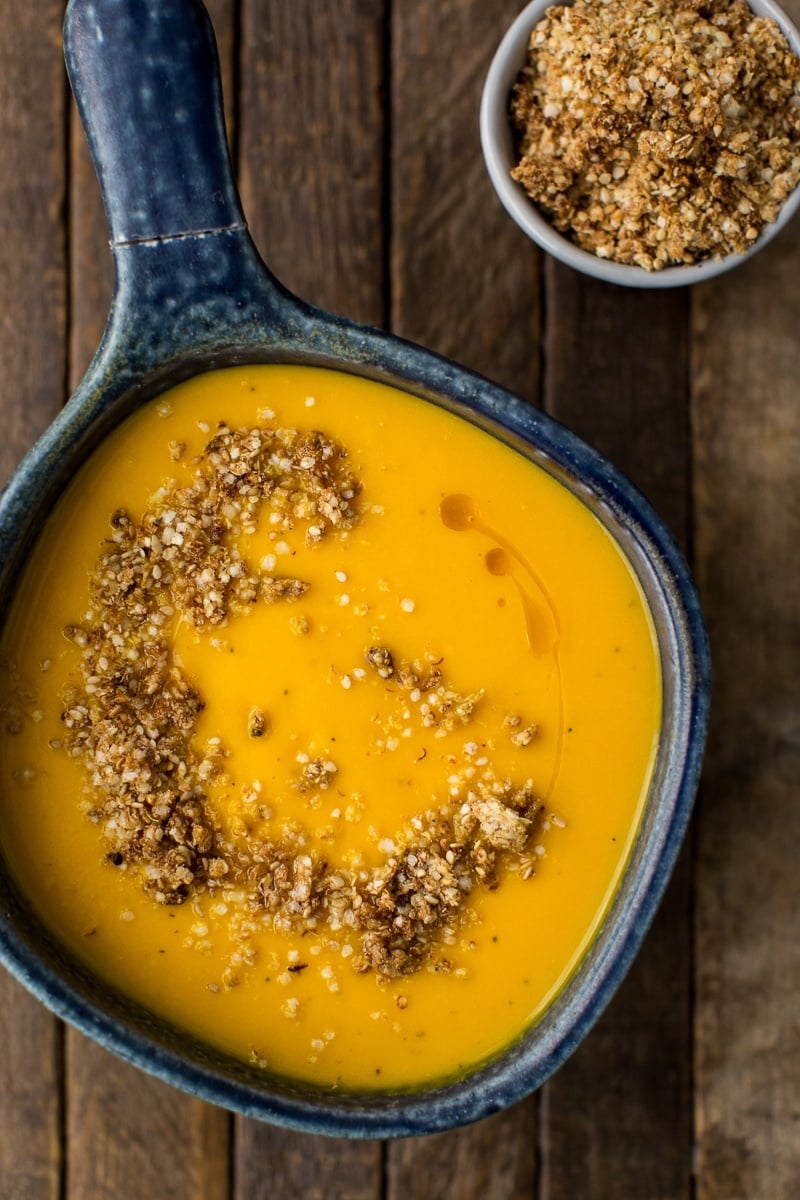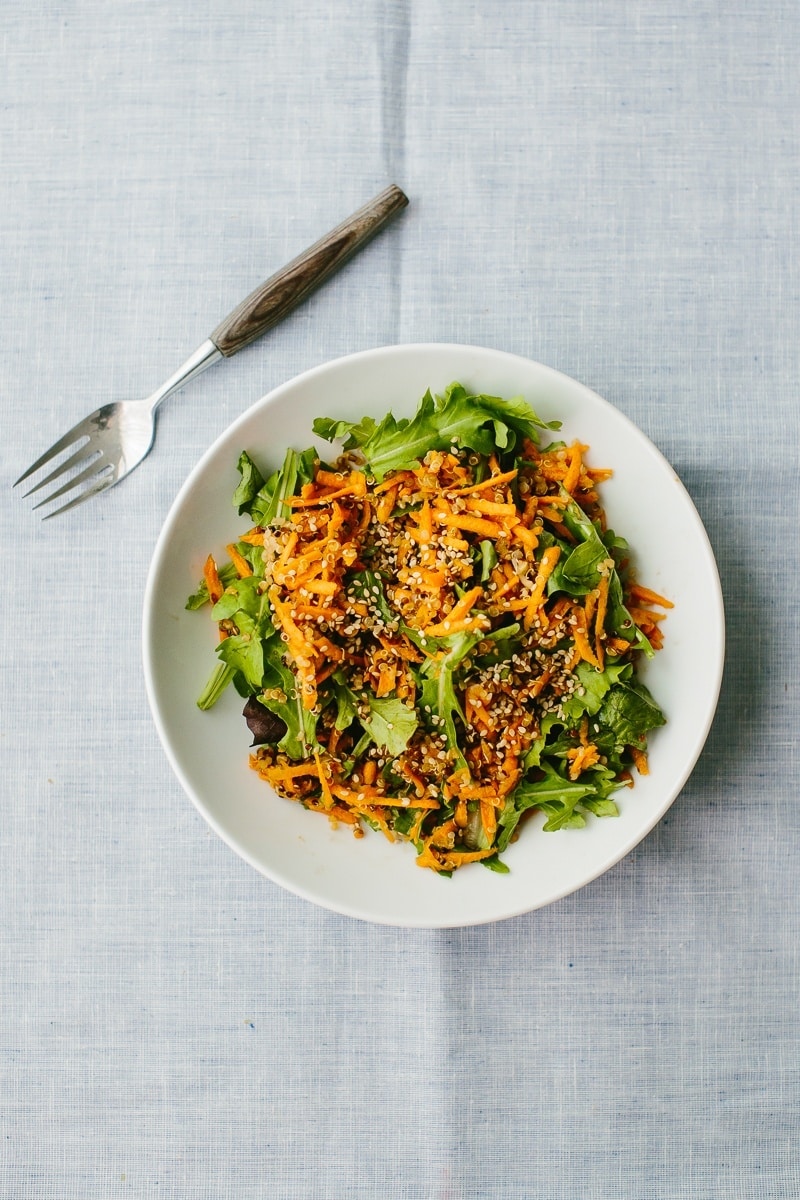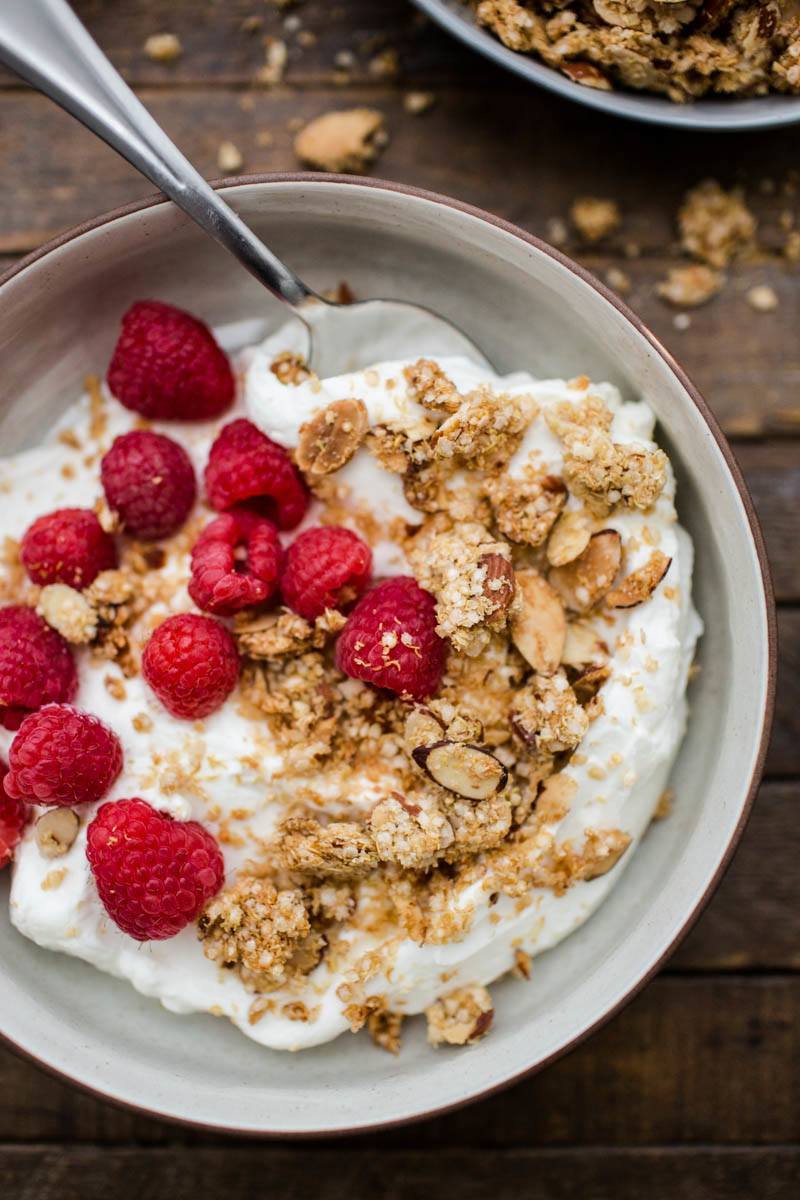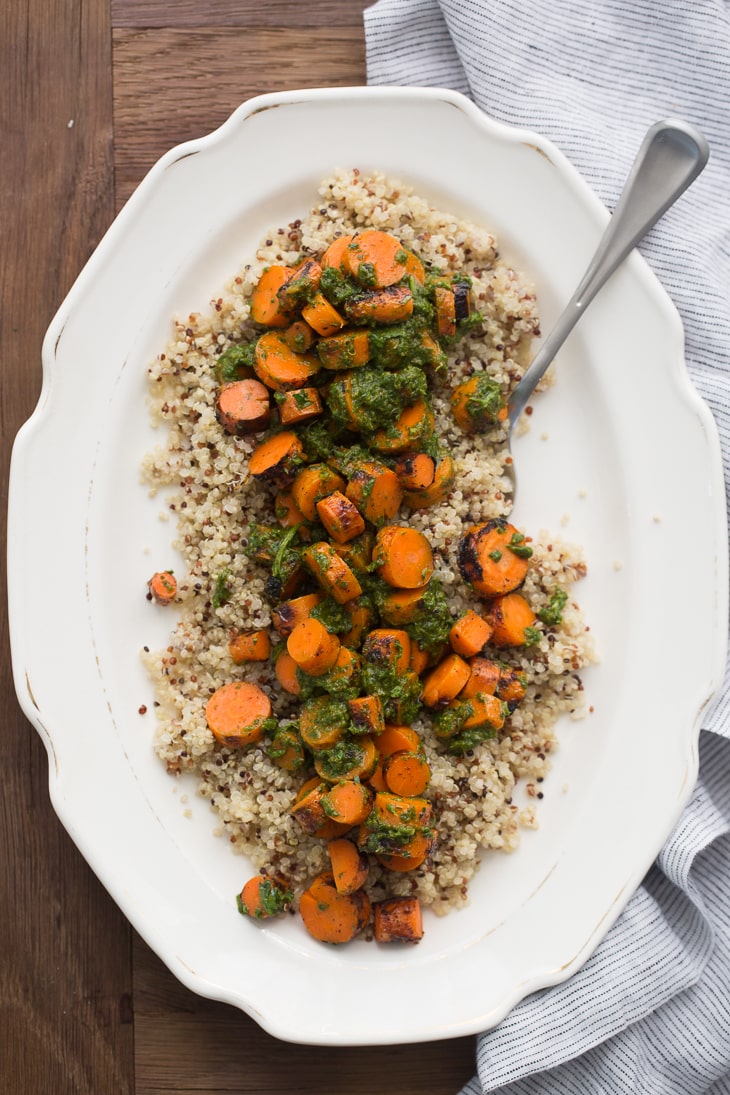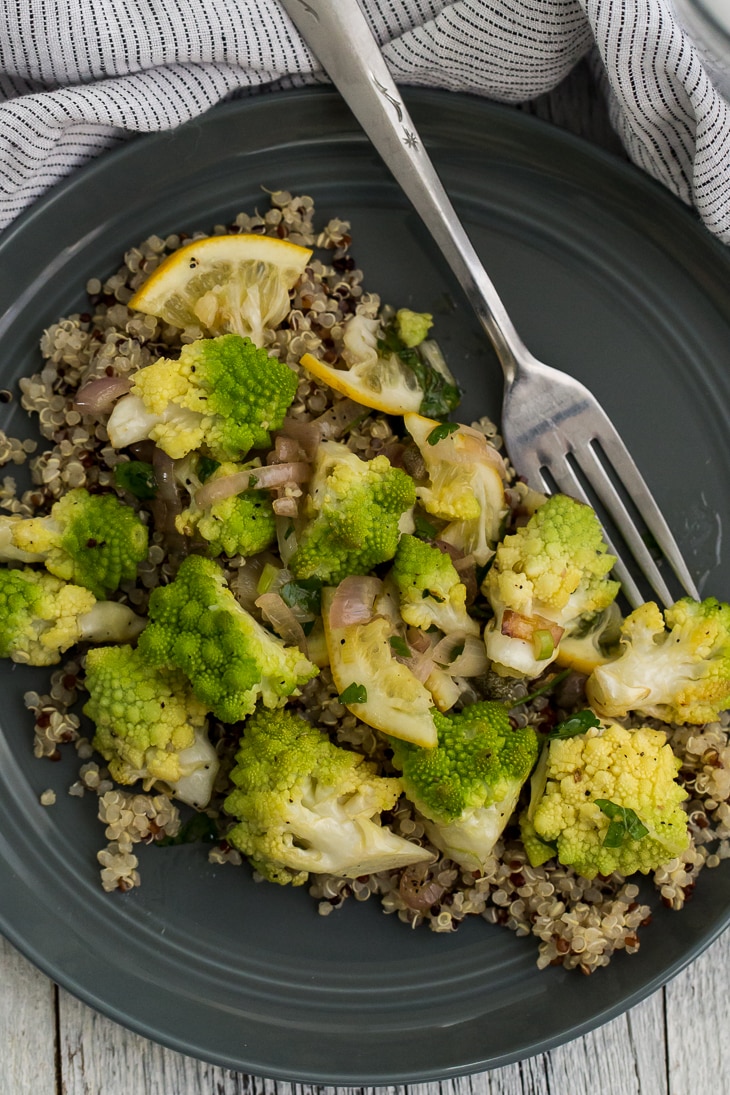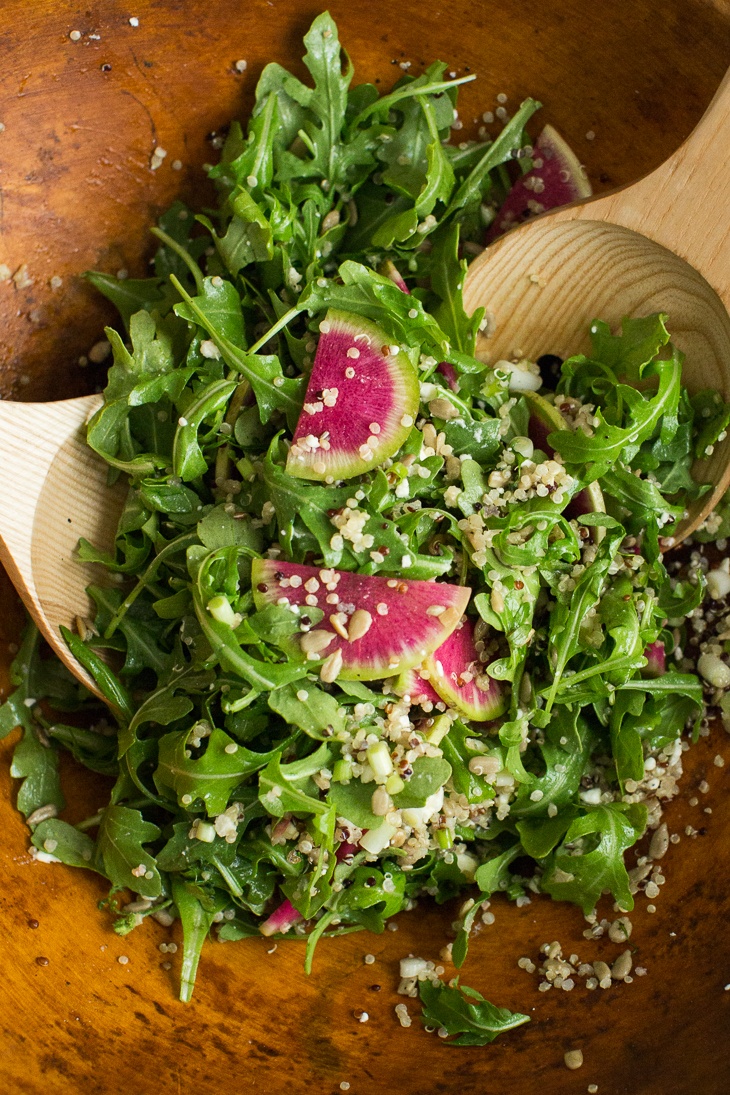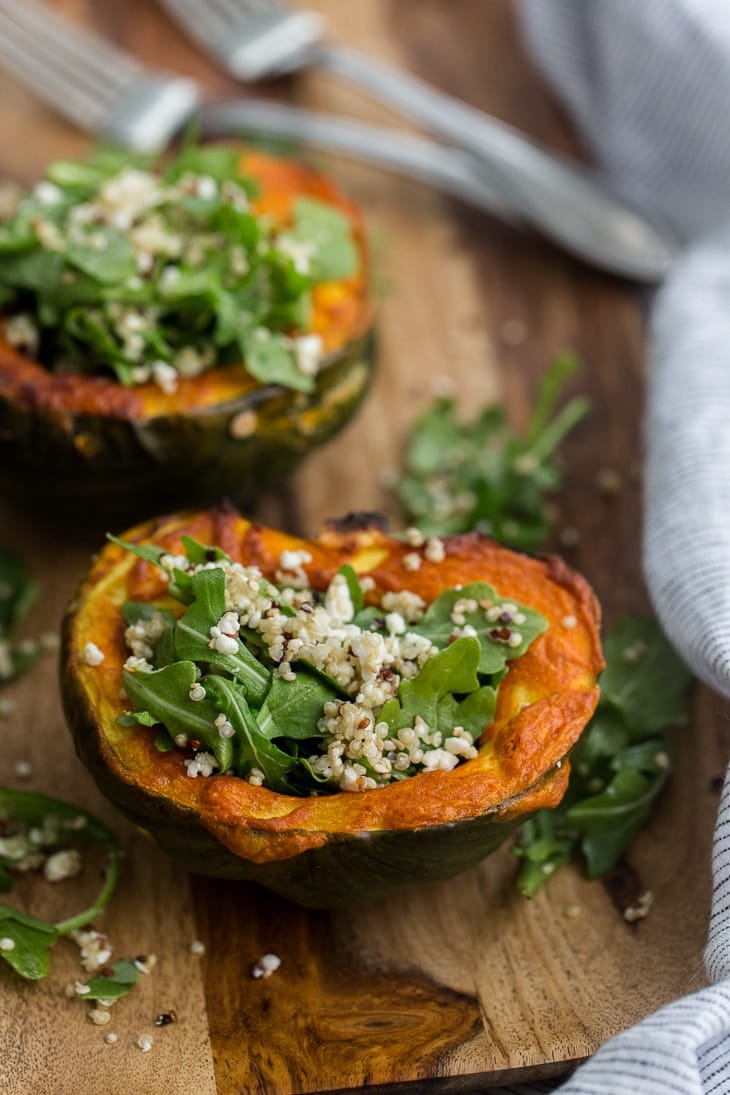
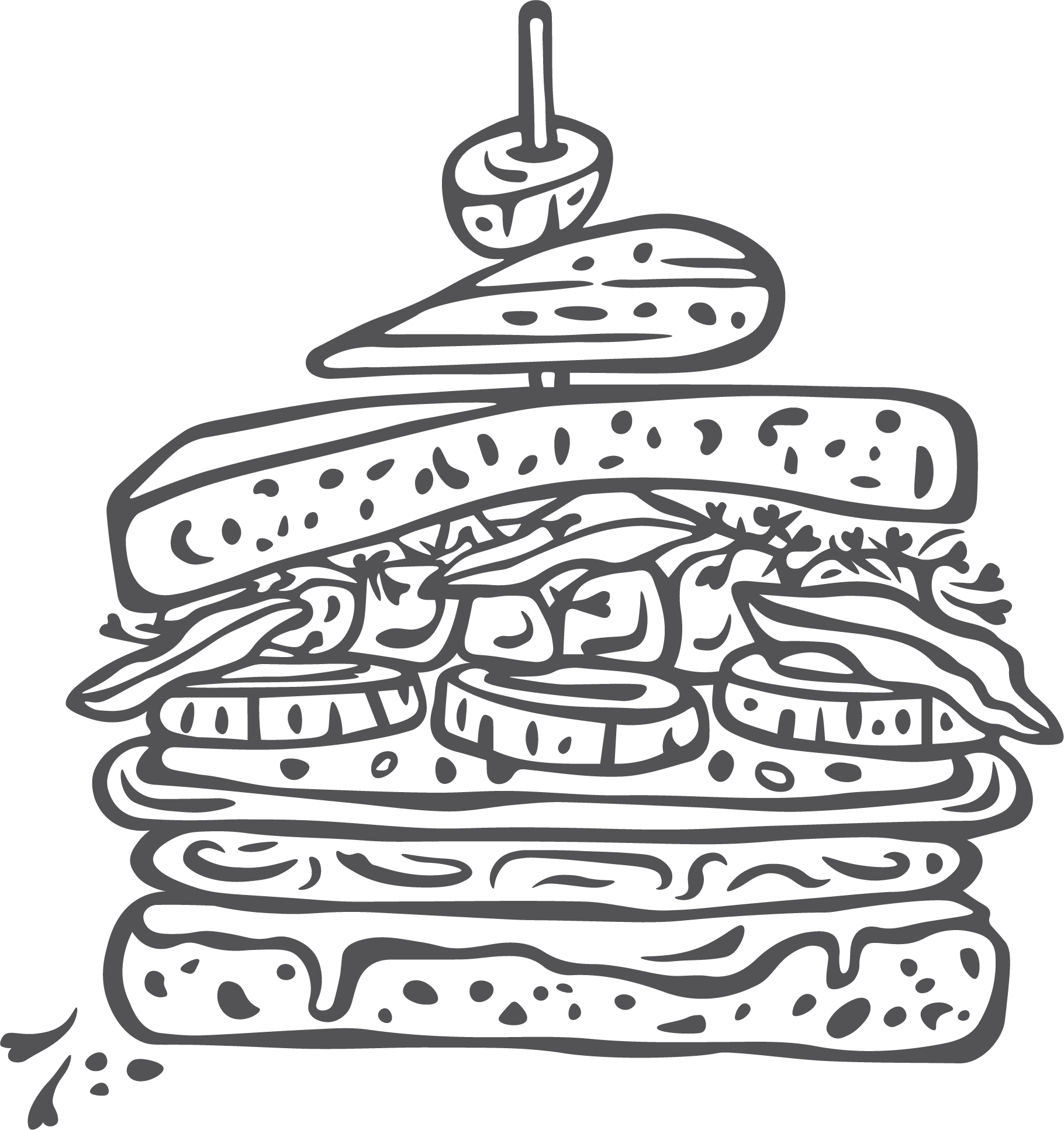
Over the past few years, quinoa has become very well known, and also happens to be gluten-free. While quinoa is classified as a grain, it’s actually a seed from a grain crop. However, quinoa is prepared and used in the same way as a grain.
Because quinoa has a quick cooking time, I don’t cook this one in bulk like I do with other grains. Quinoa is sold in three colors: tan, black, and red but occasionally comes in a mix of the three together. Some say the different colors of quinoa cook a bit differently but I don’t think there’s enough difference to warrant choosing one over the other.
Quinoa’s flavor is mild and a bit on the earthy side. It’s one of my go-to grains for vegetarian cooking because it’s so versatile. Most often, I find myself swapping in quinoa for brown rice to serve as a bed for roasted vegetables and sauce.
Before cooking, rinse quinoa well in a fine mesh strainer. Then combine 1 cup quinoa with 2 cups water and a pinch of salt. Cover and reduce heat to a simmer. Cook quinoa for 15 minutes, just until most of the liquid has absorbed. Remove from heat and let rest for 10 minutes.
Quinoa is a versatile grain that can be used as a base for grain bowls, added to salads, soups, or made into vegetable patties. Quinoa can also be popped and toasted, similar to amaranth.
Quinoa, whether the whole seed or flour, is best stored in airtight containers in a cool place. Whole quinoa can be stored up to a year in the freezer or 6 months in the pantry. Quinoa flour is best stored in the freezer and will last up to 6 months. If the grains or flour have a rancid smell when you open the bag, toss and buy fresh.
Red
White
Black
Flakes
Flour: Beyond the the grain, quinoa can also be found in flakes and flour. The flakes are great as a hot cereal or granola, while the flour can be used in similar fashion to traditional flour. I do recommend combining it with other gluten-free flours though, such as oat or sorghum.
